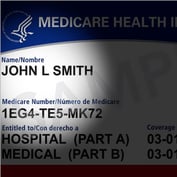CI Strategies For The Workplace: The Sooner The Better
By
As health care costs soar, many companies are cutting back on employee health care benefits, leaving yawning gaps just waiting to be filled by an enterprising producer.
 With increasing numbers of people being diagnosed with serious illnesses, the time is ripe to sell critical illness protection as part of a voluntary employee benefits package.
With increasing numbers of people being diagnosed with serious illnesses, the time is ripe to sell critical illness protection as part of a voluntary employee benefits package.
The first step in this process is to obtain the support of the employer, typically the benefits or human resources manager.
You can do this by identifying the gap in existing coverage and noting that these benefits can be enhanced at no extra cost to the company. At the same time, point out that this additional protection may also serve to boost employee retention levels and provide a competitive edge. The managers role is simply to support the program and to provide employees access to an initial sales presentation.
In many cases, you already own the account, so you will be attempting to up-sell the client. However, you can also approach voluntary CI coverage as a new business opportunity.
For example, use it to reach employers who do not offer it as part of a voluntary benefits package. That may prove to be just the beginning. Once you get your foot in the door with voluntary coverage, you may be able to open it wide enough to admit your core benefits package and services, as well.
The sooner you get started, the better–before your competitors get the same idea. Just as you might approach their clients for new business, they could be doing the same with yours!








 June 15, 2003 at 08:00 PM
June 15, 2003 at 08:00 PM










